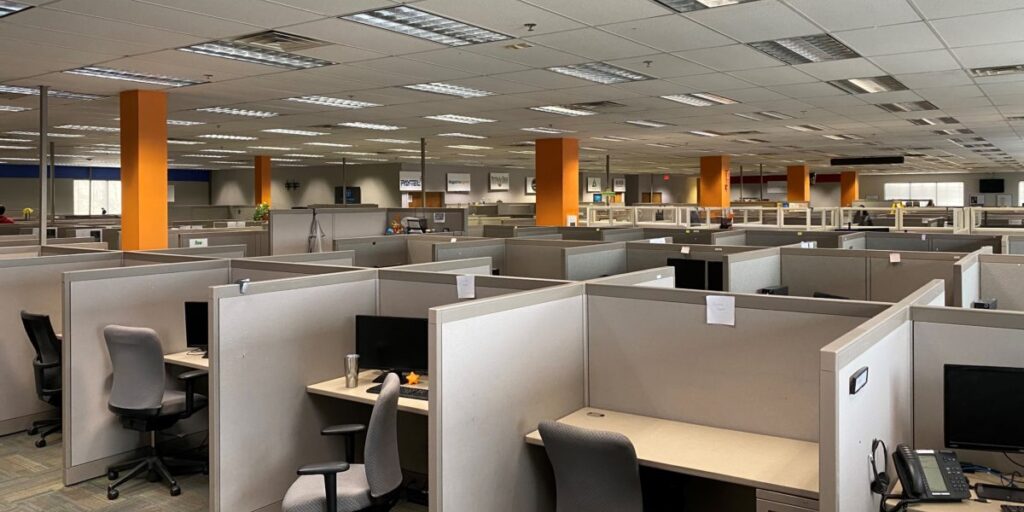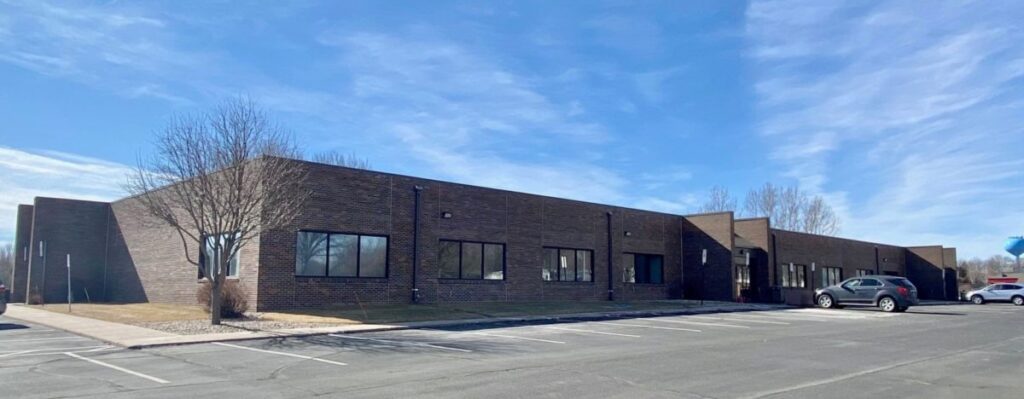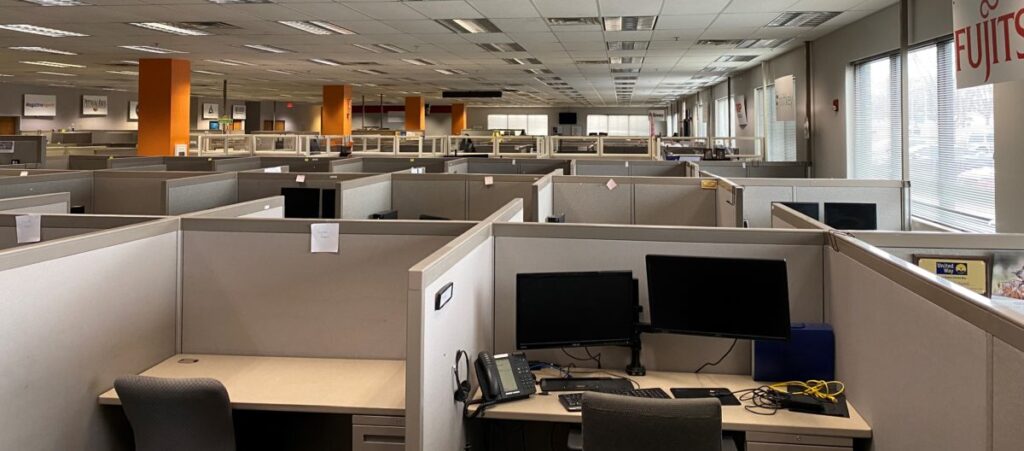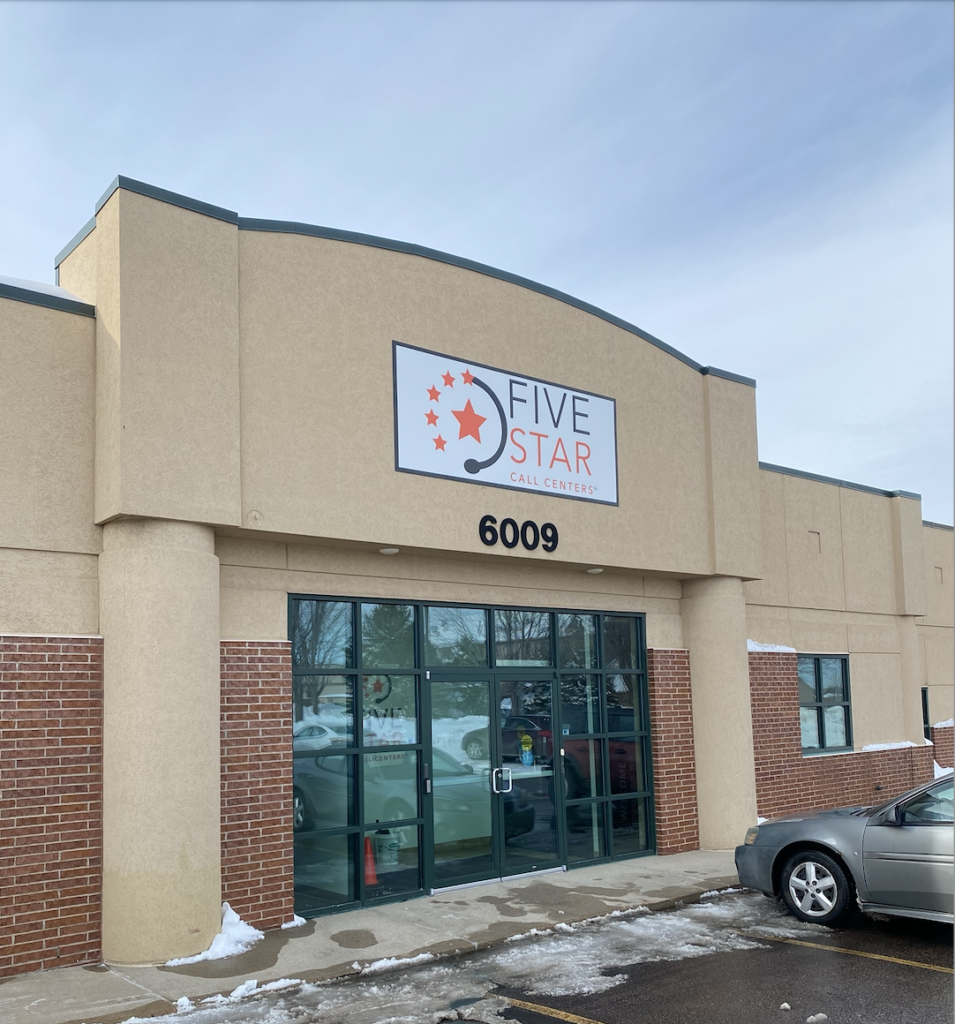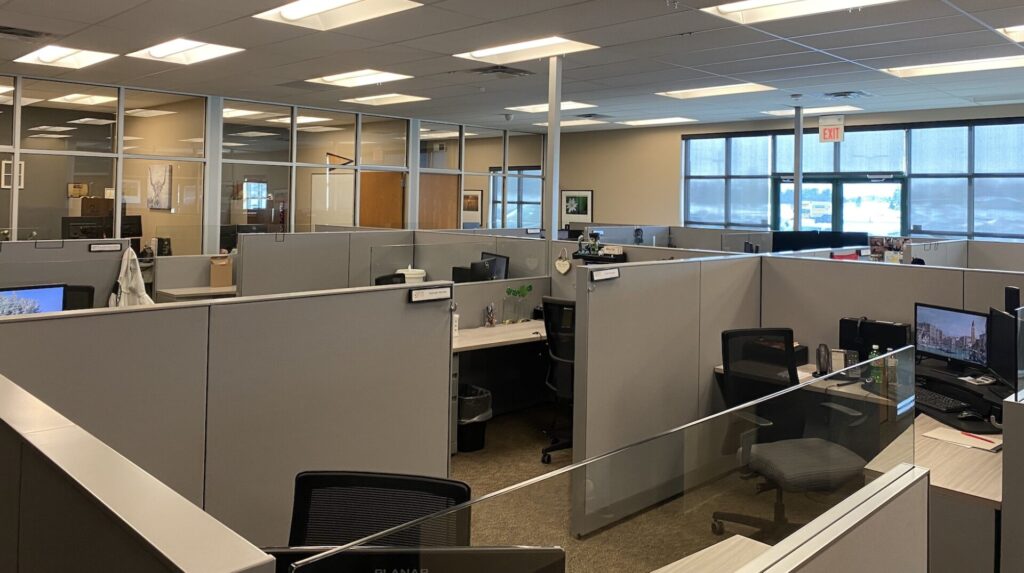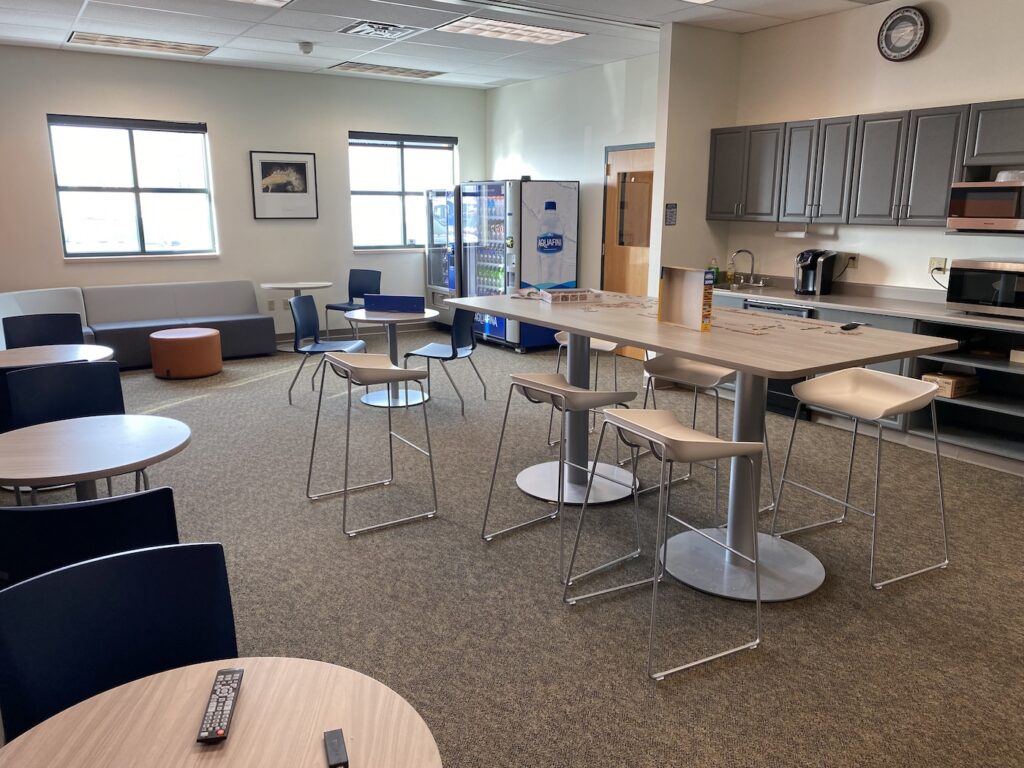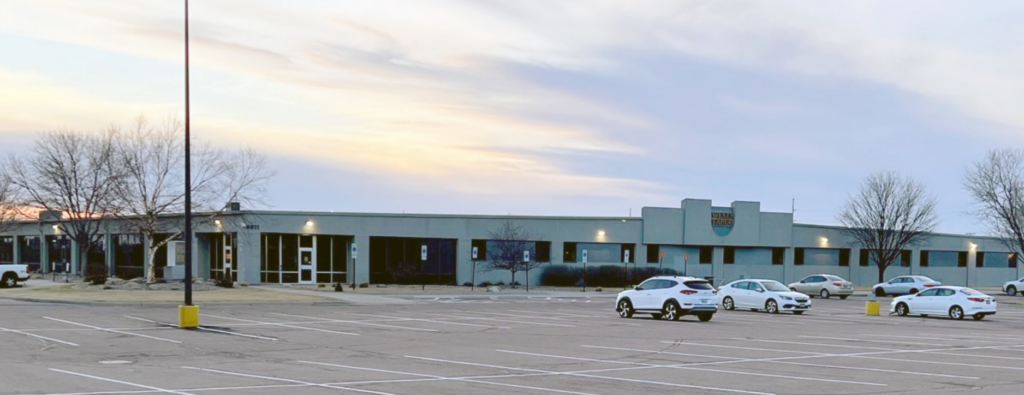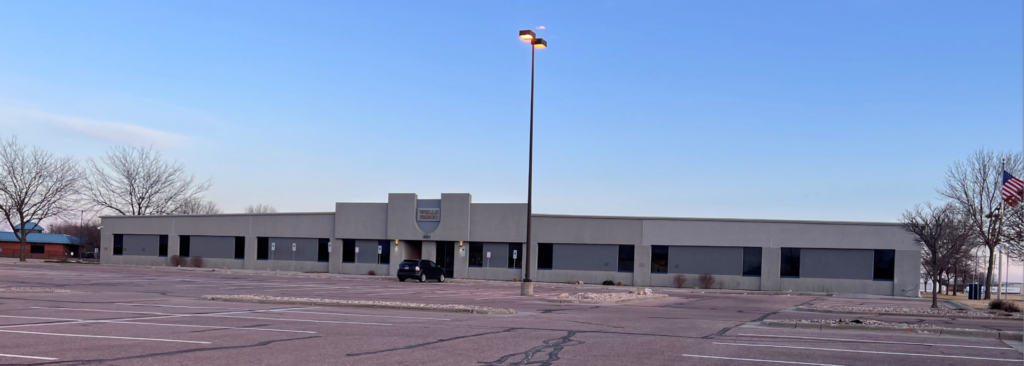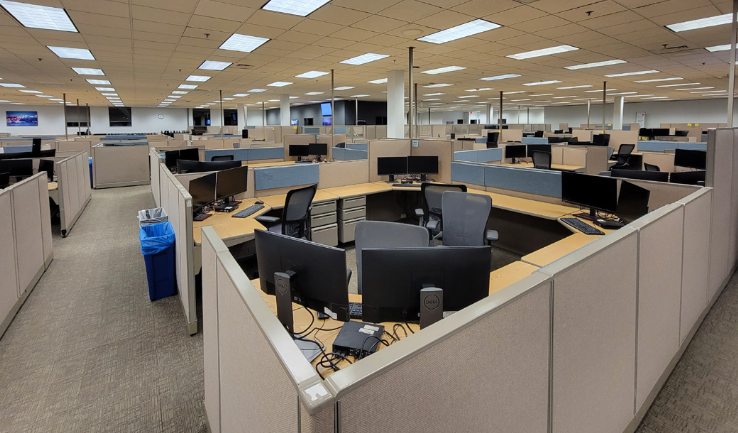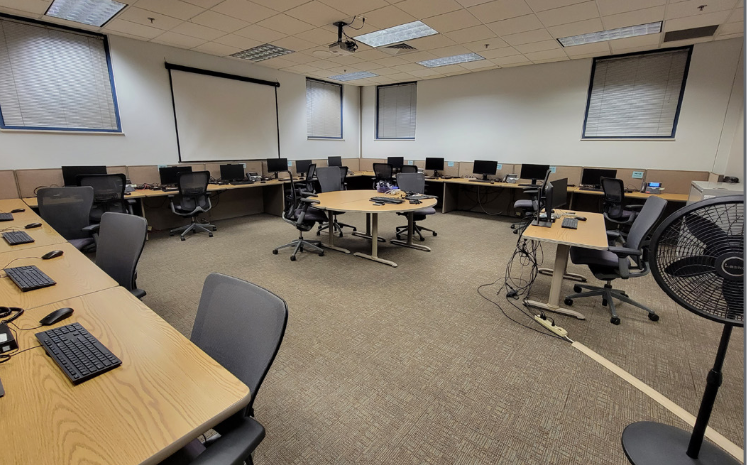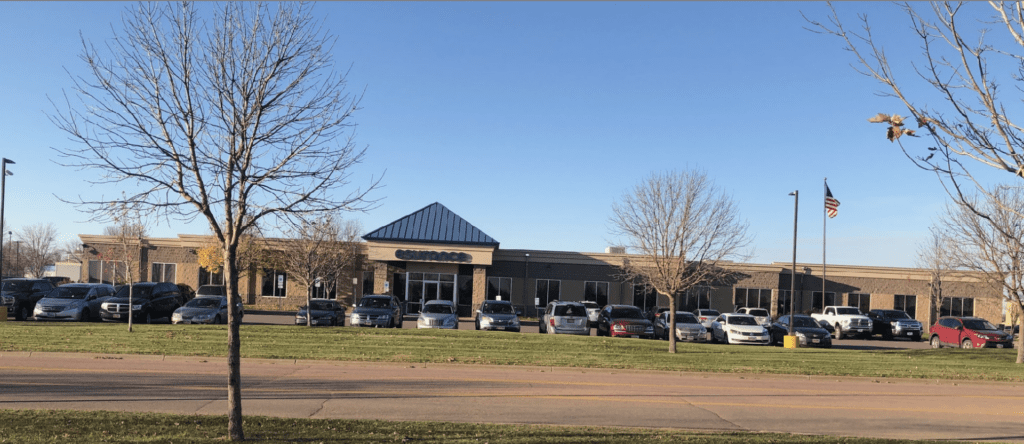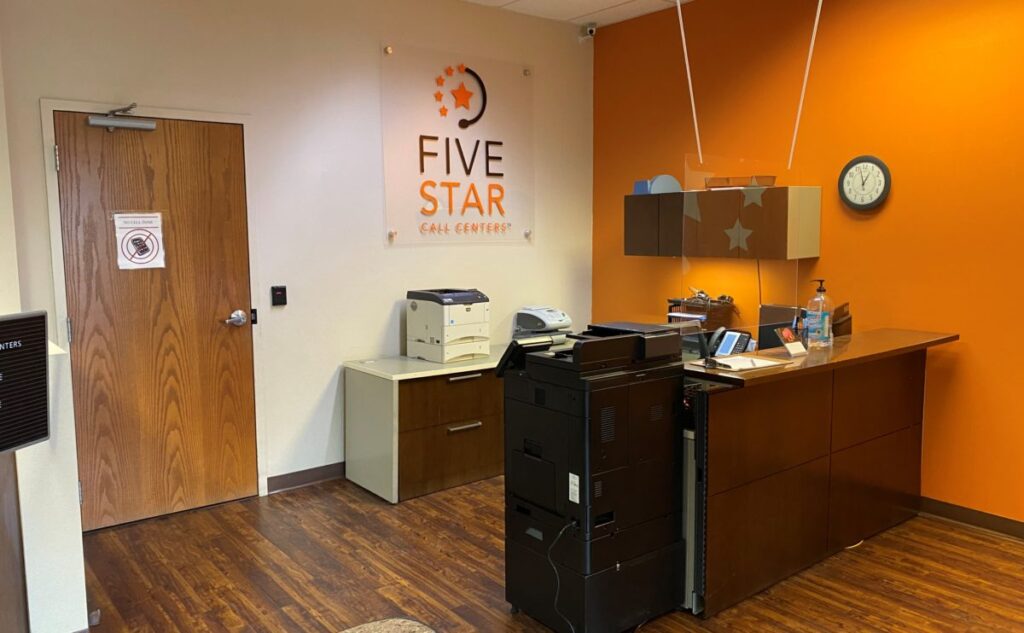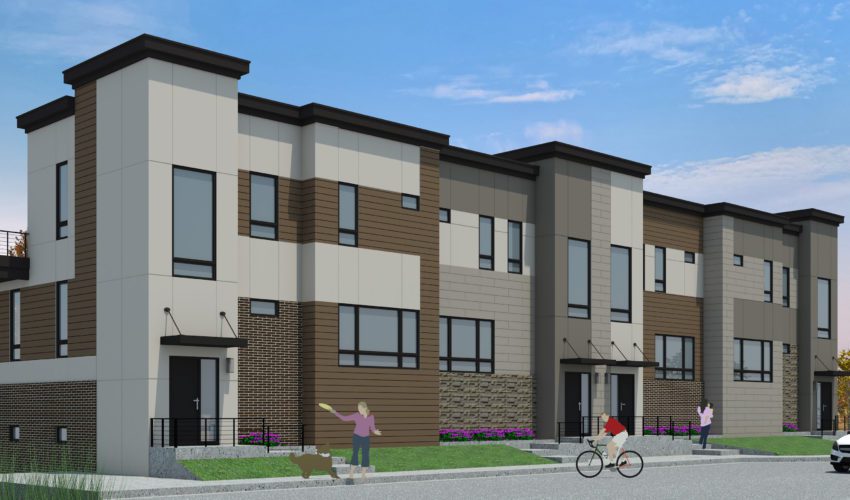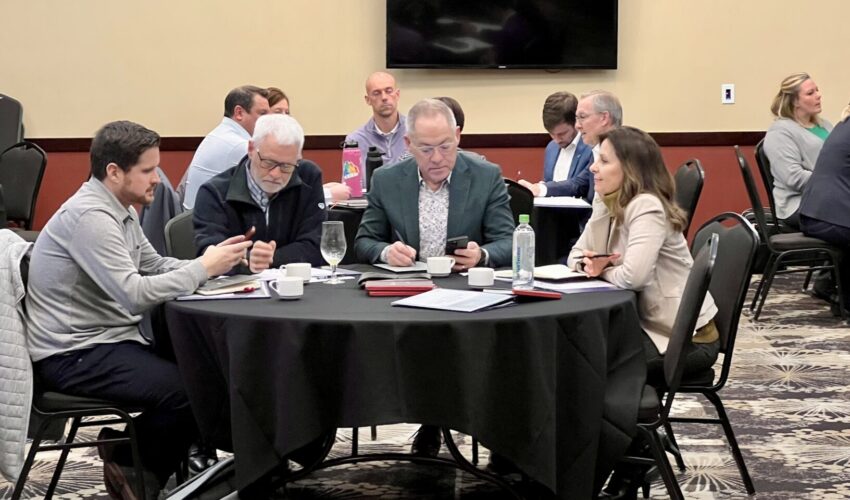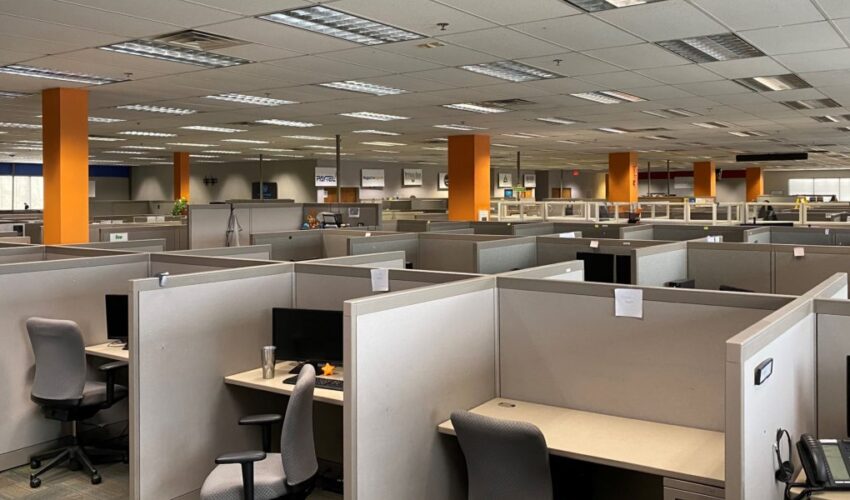Vacant call centers draw new users as hybrid work leads to shrinking spaces
In the fall of 2019, the lease was almost up on a building Sioux Falls-based Five Star Call Centers was renting in Fargo when leadership floated the idea.
“What about the possibility of working from home and not releasing that building?”
When the supervisor shared the news, “she went up to her staff, and they cheered,” co-founder Craig Lawrence said. “As a result of that, we put into place the technology and training for at-home work. I expected productivity to go down, and it didn’t. It was stable. It was the same, virtually.”
When the pandemic forced a large-scale work-from-home effort months later, Five Star already had a program in place to do it.
Now, “probably 80 percent” of the company’s nearly 700 workers largely are based in their homes, co-owner Paul Schiller said.
“We had to put on more supervisory people because of the distance but more so to give people working at home a feeling that they’re connected and they can get quick access or access to information when they’re on the phone. So it was a learning curve, but at the same time it provided an opportunity to make people feel more engaged and part of a culture.”
At the end of 2022, the founders transitioned ownership of Five Star to a three-person leadership team that has helped grow it considerably in recent years. The new owners, Troy Holt, Ray Peterson and Joel Sylvester, took over at the same time the office itself was making a move. It has downsized from about 25,000 square feet at 4901 E. 26th St. – a former Midco call center that then became L&S Teleservices before the Five Star rebrand– to less than 10,000 square feet in south Sioux Falls in a building that has been an office for several fintech companies.
“Our former location had 300 desks – as many desks as we could fit in the space,” Sylvester said. “It was great for having people in the office, but it wasn’t necessarily set up for collaboration and building culture.”
The new office has 60 agent desks and office space for 30 leaders and support staff.
“About half our building is support staff – recruiting, training, coaching – and half the office is set up for agents handling customer requests,” Sylvester said.
While Five Star has grown its revenue tenfold in the past decade, the physical space has shrunk. For years, call center operations would select a location, buy or lease a building and begin filling it with people, he said.
“Now, the model is inverse. You start hiring team members in a market based on cost of living and unemployment rates, education rates, and then if you get a concentration of people, you can put a facility in place.” he said. “And that doesn’t need to be 30,000, 40,000 or 60,000 square feet. It can be a very controlled 5,000, 7,000, 10,000 square feet focused on culture and training and collaboration.”
The shift in call centers’ real estate needs is clear in the Sioux Falls market. In the past week, two call center buildings for Wells Fargo & Co. went on the market for $9.7 million and $5.7 million.
Combined, they offer about 175,000 square feet.
The move means Wells Fargo, which also has offered remote work, will be left with one call center in Sioux Falls.
“Call centers are shrinking and being repurposed,” said Gregg Brown of NAI Sioux Falls, who has the Wells Fargo buildings co-listed with colleague Craig Hagen. “It started all the way back with Capital One when they vacated the market and Sanford basically backfilled it and repurposed it.”
NAI also has two vacant buildings on the former Citibank campus listed. While Avera uses one of them for back-office work, it’s available for sublease as those operations also can work from home.
“We don’t think we’re going to see 500-body call center users coming into town,” Brown said. “I’ve been working on backfilling the Citibank space for three years, and what’s happened there is we’ve gotten a lot of looks from call center users. What will happen is the call center hires a national broker that’s looking at multiple markets.”
While Sioux Falls has the space, it has been falling out of contention because of concerns around available workforce.
“They’re competing against groups allowing people to work from home,” Brown said. “You can sit in your pajamas at home instead of going to the office, so we’re seeing a dying trend.”
Repurposing space
While the buildings aren’t being reused as traditional call centers, they are drawing alternate uses.
Another former Wells Fargo call center is used by Graco as light industrial. The former Cigna building, which had a call center, is Silencer Central’s headquarters. The former Capital Card Services building is used for light industrial by California-based Presidio Components.
In marketing the Wells Fargo space, NAI mentions its column spacing and ceiling height to attract light industrial users, Brown said.
“Because they’re metal buildings, you can pop in a drive-in bay and create a loading dock,” he said. “You can repurpose them.”
In an industrial market with barely any inventory and rising construction costs, there’s value.
The buildings include “a lot of land,” Hagen added. “It’s about a 20 percent building-to-land ratio … and we’re at $89 to $93 a square foot. You can’t even build a structure for that, let alone the land.”
Recently, the former Esurance building at 3509 N. Louise Ave. was purchased by First Premier Bank for its backroom operations. It will move hundreds of employees from a dated former warehouse in northeast Sioux Falls.
“When Esurance made the decision to work from home, it freed up their building, and it’s a perfect size for us, plus it’s close to our campus with Premier Bankcard,” First Premier CEO Dana Dykhouse said. “So it was just a natural fit, and we will more than double our square footage.”
First Premier’s staffing has swelled on its cyber banking side but dropped more broadly, thanks to technology-driven efficiency. For instance, customers late on payments used to get a phone call from a staff member reminding them to pay to avoid late fees. Now, that notification is done by automated text message. So while the organization has grown from 3 million to 4 million accounts in recent years, its need for staff has dropped from 3,000 to 1,200.
While there are work-from-home opportunities in the call center, which are earned by high performers for specific jobs, the move to a new office underscores the bank’s desire to be an “in-bank workplace,” Dykhouse said.
“If you’re simply trading time for money, find someplace else to work,” he said. “We want people to enjoy their environment and co-workers, and have fun in the workplace and be mentored and become better, and we think that has to happen in person.”
The former Five Star Call Center building is on the market, listed with Bender Commercial Real Estate Services, and there has been one offer with another expected, Reggie Kuipers said.
“I would say it’s a slight repurpose, more of an operations use that would be adaptive reuse,” he said. “A similar use but not a straight call center.”
Nationwide, call center groups Bender is working with “are taking 40 to 50 percent less of what they had previously,” Kuipers said, while noting that some vacant space might be filled again if economic conditions compel leaders to call people back into the office.
“There’s a cleansing that’s happening in the call center world. It’s a year of transition,” he said. “There’s been a tug of war for years when the C-suite had control of employees and then for two years when employees have had control of their bosses. … There’s totally this year of reckoning and transition, and people are going to get back to the office.”
Meanwhile, at Five Star’s new office, the shift in space was made clear during a recent snowstorm.
Sylvester found himself playing chauffer to pick up employees who couldn’t get to work and in some cases could no longer work from home because they weren’t there alone in a secure-enough setting.
“We called them the storm troopers,” he said.
Still, “I had to pick up 12 people,” he continued. “If this had been 2018, I would have had to pick up 400 people. That’s the difference.”

